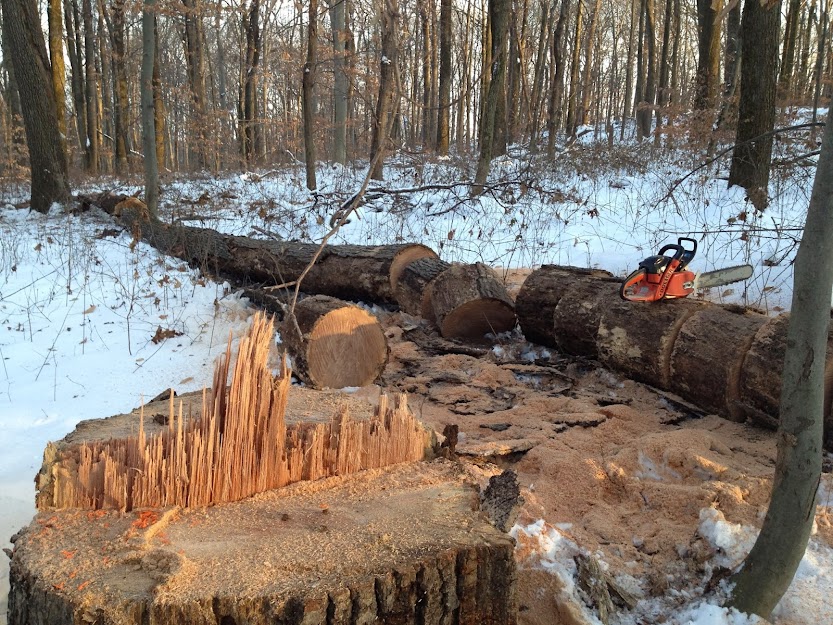Still cutting the dead 100 year old Red Oak in the woods behind my house. Don't know exactly why they are dying, have heard several suggestions, not sure I put a lot of faith in any of the ideas. But, it leaves me with a ready supply of firewood for processing.
It's plenty cold, and the ground is snow covered. Great weather to saw another down and haul it out of the woods.
I made a video of this one, it's about 30" across at the cut height, so I had to saw from both sides with my Dolmar PS-510 and 18" bar.
I started bucking right away, and took this still picture after I ran out of gas (saw, not me this time).

It's plenty cold, and the ground is snow covered. Great weather to saw another down and haul it out of the woods.
I made a video of this one, it's about 30" across at the cut height, so I had to saw from both sides with my Dolmar PS-510 and 18" bar.
I started bucking right away, and took this still picture after I ran out of gas (saw, not me this time).









